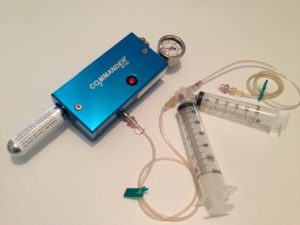Peripheral Angiography with CO2
Why CO2 Angiography?
Patients with peripheral vascular disease often have multiple risk factors such as hypertension and diabetes that often result in chronic kidney disease. Although the risk of developing worsening kidney function or even renal failure after a contrast procedure is usually quite low, patients with pre-existing kidney disease are at higher risk of developing kidney failure (“contrast nephropathy”) after receiving contrast. The worse the kidney function, the higher the risk of acute renal failure after a contrast procedure.
How to Avoid Contrast Nephropathy
Most patients who have mild kidney disease can avoid contrast nephropathy by minimizing the amount of contrast administered during the procedure and by utilizing aggressive hydration with intravenous fluids both before and after the procedure. However, the only way to be certain of avoiding contrast nephropathy, especially in patients with more severe chronic kidney disease, is to avoid giving contrast completely. Fortunately, many peripheral angiographic procedures can be performed using CO2 (carbon dioxide) instead of contrast as long as a technique called “digital subtraction” is used. Since CO2 is gaseous and is entirely non-toxic to the kidneys, the interventionalist may use an almost unlimited amount of CO2 without any concern that kidney function will deteriorate. Surprisingly, the images obtained with CO2 can be quite comparable to contrast images when proper technique is utilized.
Sample CO2 angiograms are shown below:





